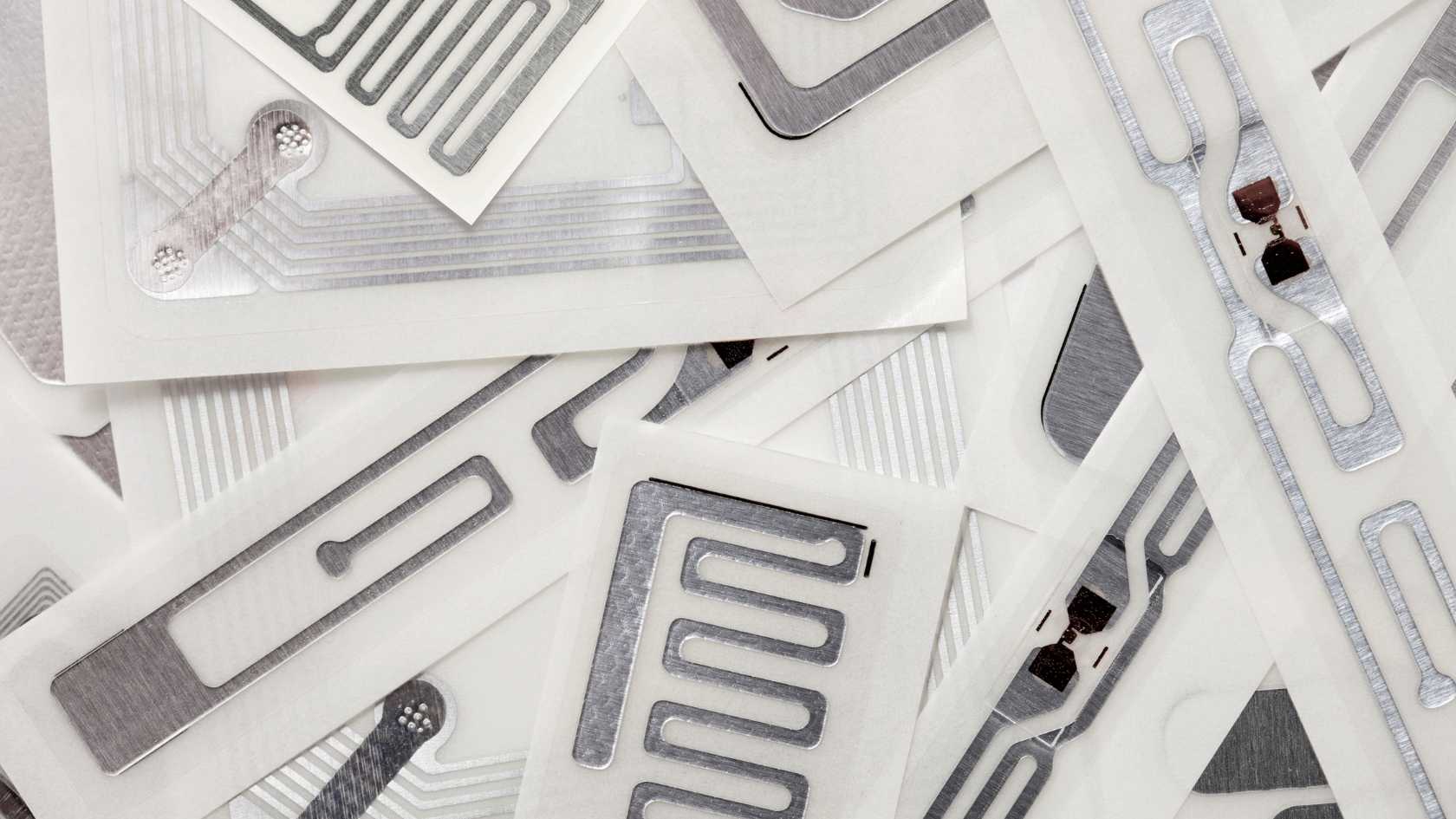RFID (Radio-Frequency Identification) is a technology that harnesses the power of radio waves to easily identify and automatically track almost any item.
Developed from its early roots in WWII radar, RFID has transformed into a game-changing innovation that is revolutionizing industries worldwide. In this post, we will unravel the fundamental elements of RFID systems, explore its powerful capabilities, and demonstrate how it empowers businesses to optimize operational efficiency and gain real-time visibility across their manufacturing, supply chain, and retail operations.
The Basics of an RFID Solution
Complete RFID solutions consist of RFID tags attached to items, RFID readers (which can be mobile or mounted), and application software. The software processes the raw data encoded on the RFID tags and converts it into valuable insights and actionable information for the end-user. Let's dive into each element in more detail.
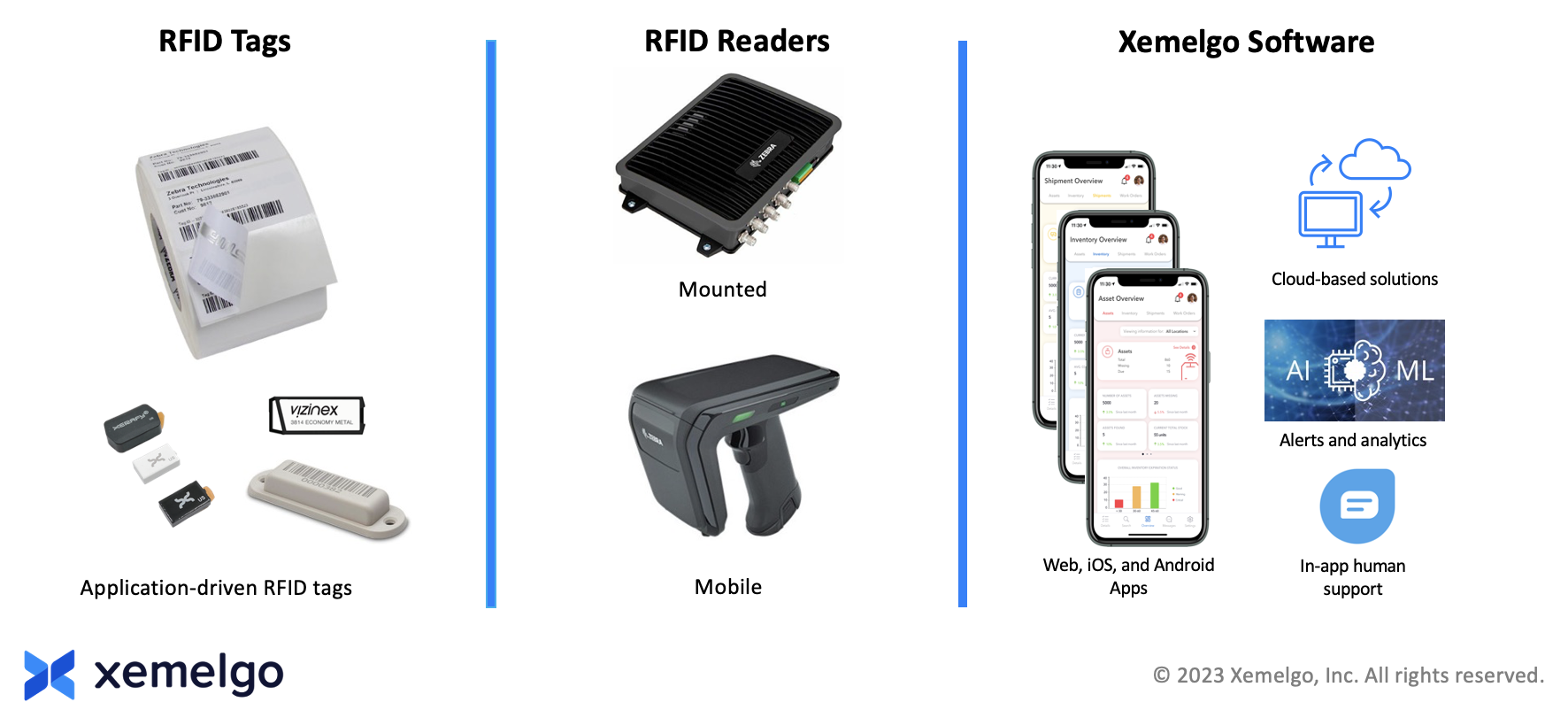
RFID Tags
RFID tags are small, versatile devices that can be attached to almost any item. They consist of a microchip and an antenna, and unlike other tracking technologies, passive RFID tags don't need their own power source. Instead, they rely on the energy from an RFID reader's signal to activate and transmit data back to the reader.
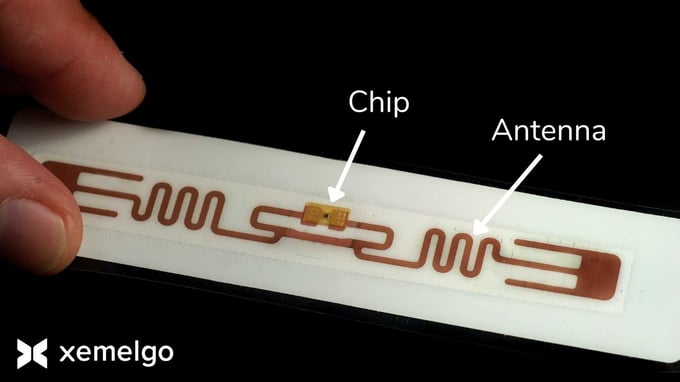
The data stored on an RFID tag's microchip can be as simple as a unique identifier, which can be linked to other information through application software like Xemelgo. The tag can also include additional information, such as a part number. In many cases, labels containing RFID tags can replace traditional labels and work alongside human-readable information and barcodes.
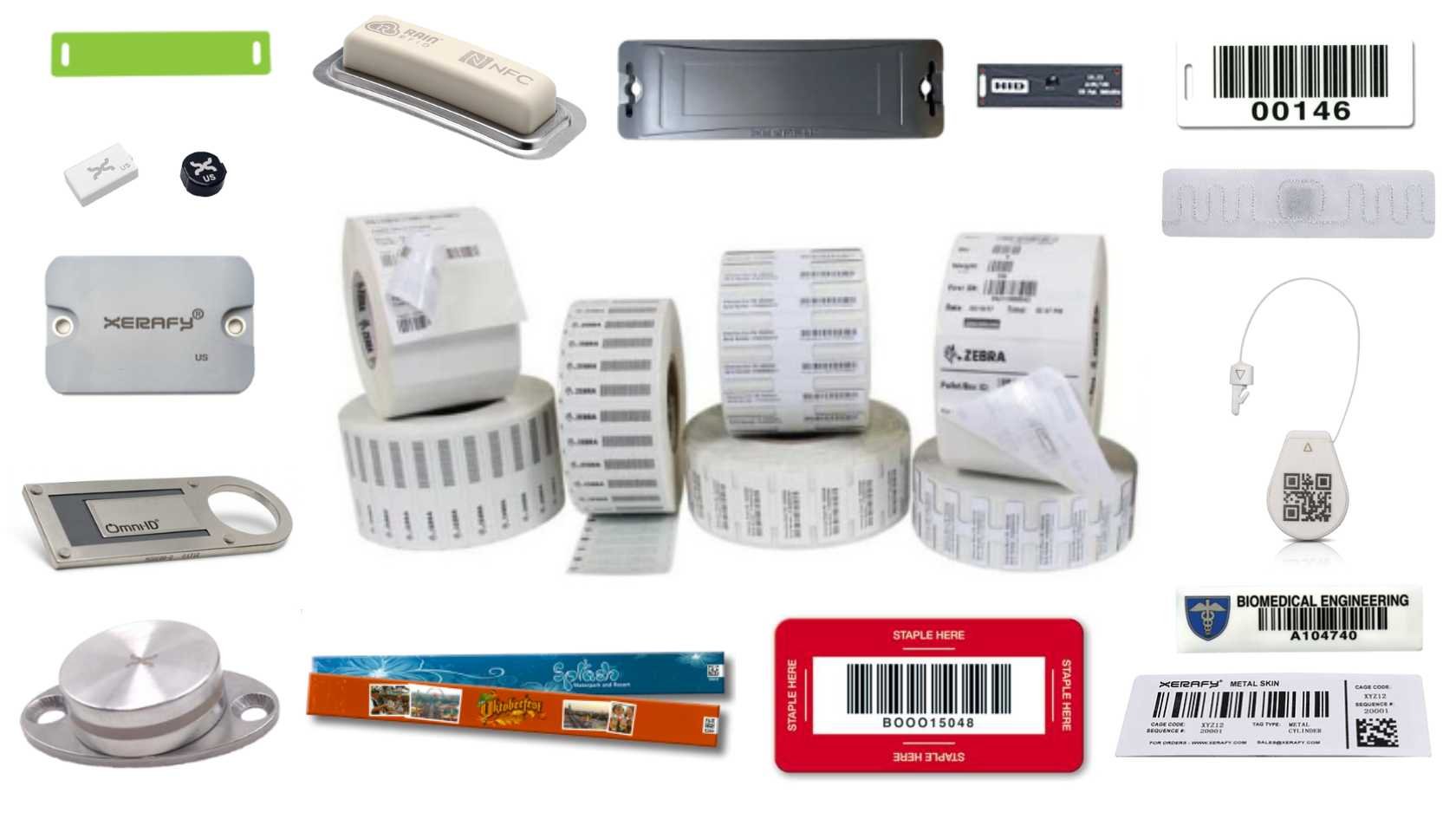
RFID tags come in a wide range of options for specific applications. From basic paper labels that can be printed and encoded using an RFID printer to durable tags designed for everything from small hand tools, to industrial tooling, cargo shipping containers, pallets, livestock, event wristbands, beer kegs, and more. There are RFID tags that can be injection molded, welded, or stapled into parts and containers directly, and there are even tags specifically engineered to withstand extreme environments such as cryogenic freezers, industrial ovens, chemical baths, and autoclaves. Some RFID tags possess additional functionalities too, such as sensing humidity and temperature, or flashing an LED light upon activation.
There are billions of RFID tags produced each year, they are more economical than ever, and tag technology is advancing rapidly. If you can dream of a use-case, there's a good chance an RFID tag exists for it.
RFID Readers
RFID readers send out a radio signal that activates the tags and retrieves their data. There are different types of RFID readers designed for a broad range of applications and environments, including manufacturing, warehousing, retail, and industrial settings.
Handheld RFID Readers
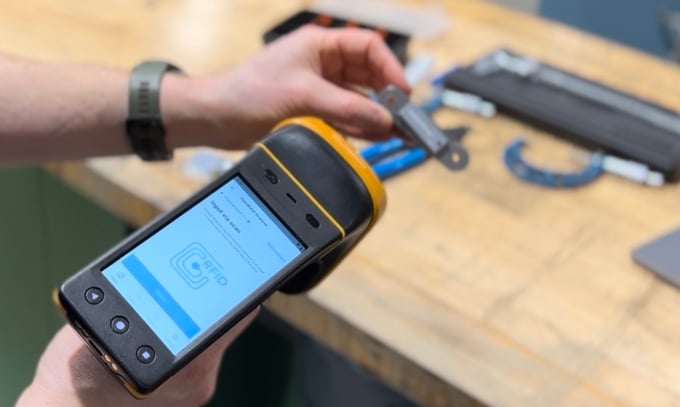
Handheld readers are used to quickly locate individual items, pick items from stock, and perform audits and cycle counts. Sled-type devices are paired via bluetooth to existing mobile devices and tablets, or fully-integrated with their own screen and mobile computer. Xemelgo supports both handheld device types from a variety of manufacturers, and offers native apps for both iOS and Android devices.
Mobile RFID Readers
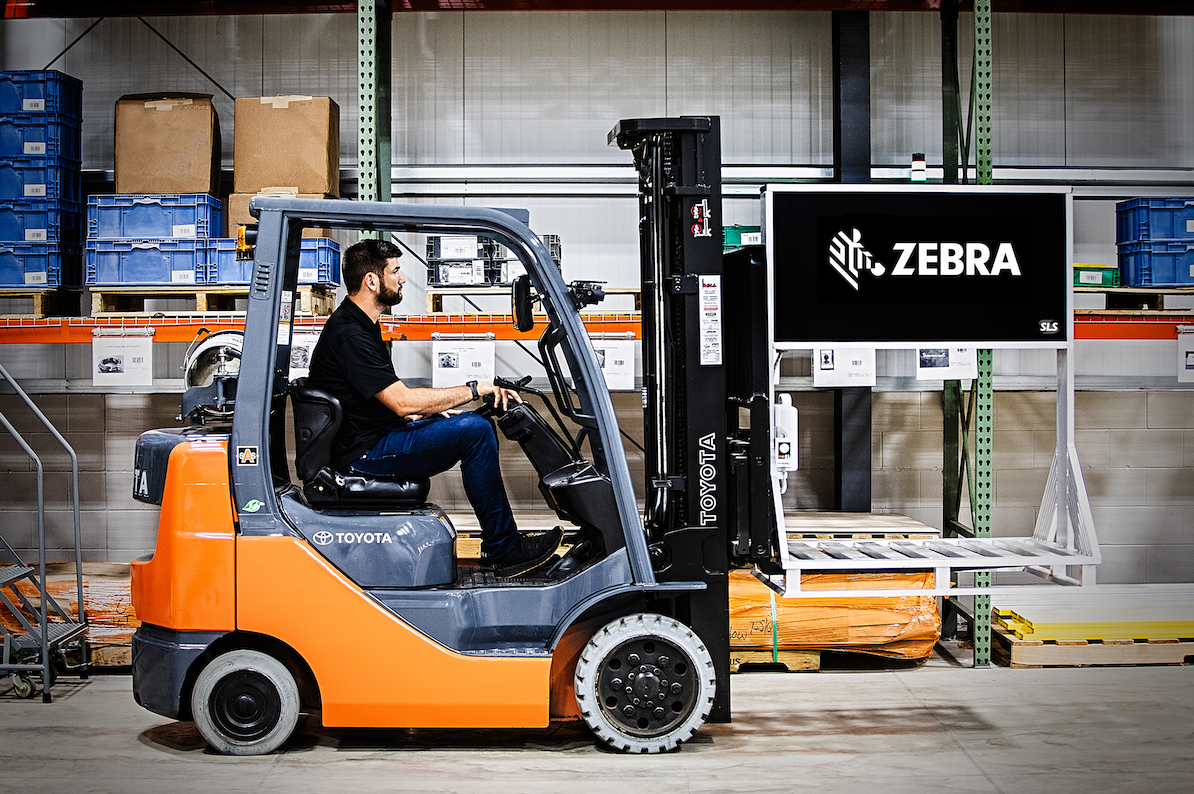
Mobile readers function similarly to handheld readers, and can be mounted to forklifts, AGV's (Autonomous Guided Vehicles), and other mobile platforms to quickly and accurately inventory large warehouses and outdoor yards.
Mounted RFID Readers
Mounted or fixed readers connect to one or more antennas to cover choke points or zones. They come in a broad range of styles and form-factors, and can be configured to meet the specific needs of the application. Xemelgo has worked with all types of reader configurations from doorways to conveyor belts, dock door portals, grab-and-go storerooms, workstations, zones, departments, and even complete coverage across multiple facilities.

As an independent software company, Xemelgo is hardware and technology agnostic. We support a broad range of RFID hardware devices and other IoT sensors from industry-leading technology partners to deliver the best end-to-end solutions possible.
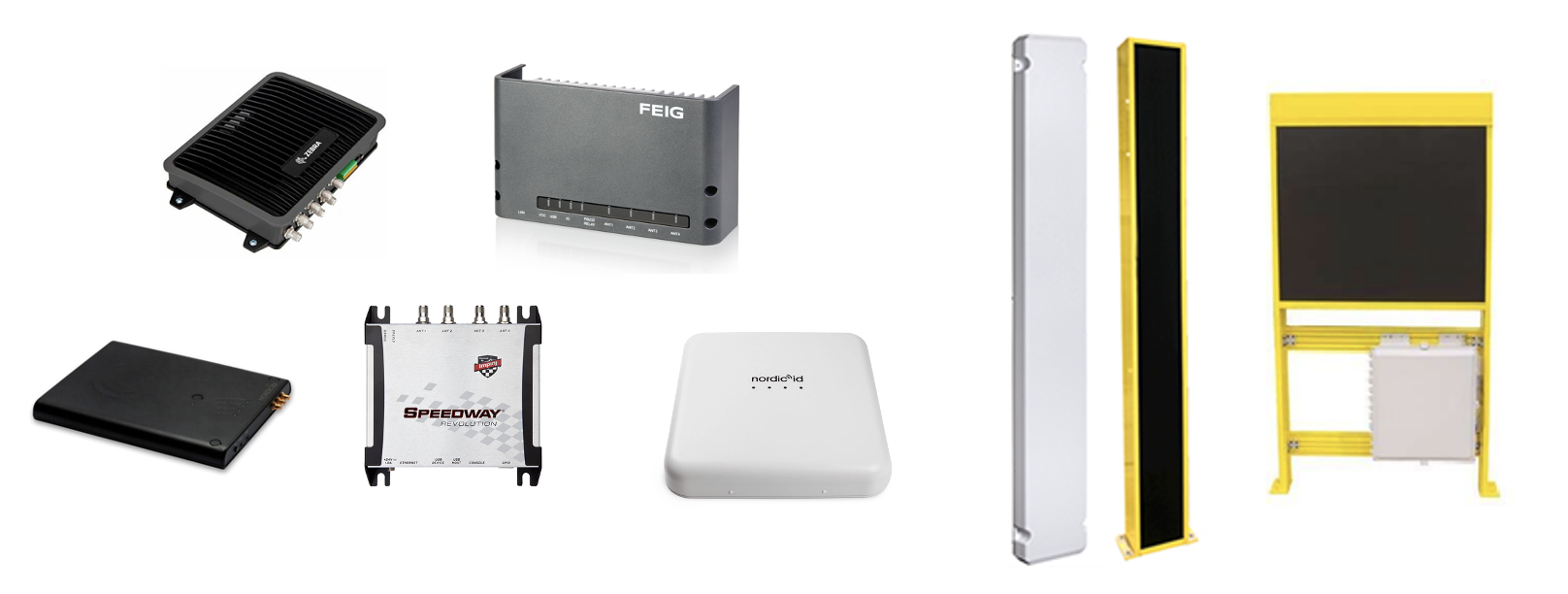
Setting the standard. Did you know UHF RFID technology is governed by the ISO/IEC 18000-6 standard, and influenced by regulations from FCC in the United States and other regional governing bodies globally? These standards and regulations ensure seamless interaction between components from different manufacturers.
RFID Software
To transform the raw data from RFID tags and readers into valuable insights, businesses rely on powerful software solutions like Xemelgo. With its real-time data processing capabilities and intuitive web and mobile applications purpose-built for operations, Xemelgo empowers users to make well-informed decisions and achieve tangible results. By harnessing the potential of RFID technology, Xemelgo enables businesses to streamline operations and optimize efficiency.
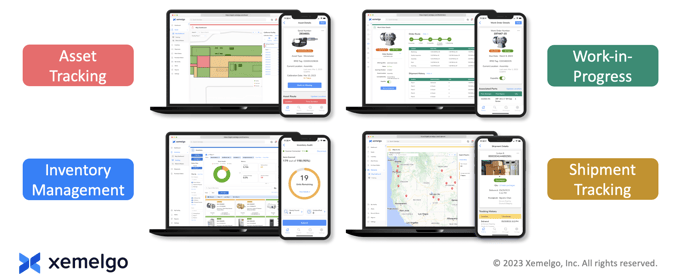
Getting started with RFID
RFID technology offers endless possibilities for businesses seeking to streamline their manufacturing, supply chain, and retail operations. By utilizing RFID tags, readers, and powerful software solutions like Xemelgo, businesses can unlock the true potential of real-time data-driven decision-making.
With Xemelgo, it's never been easier to get started with RFID.
Learn more about the Xemelgo suite of solutions.
